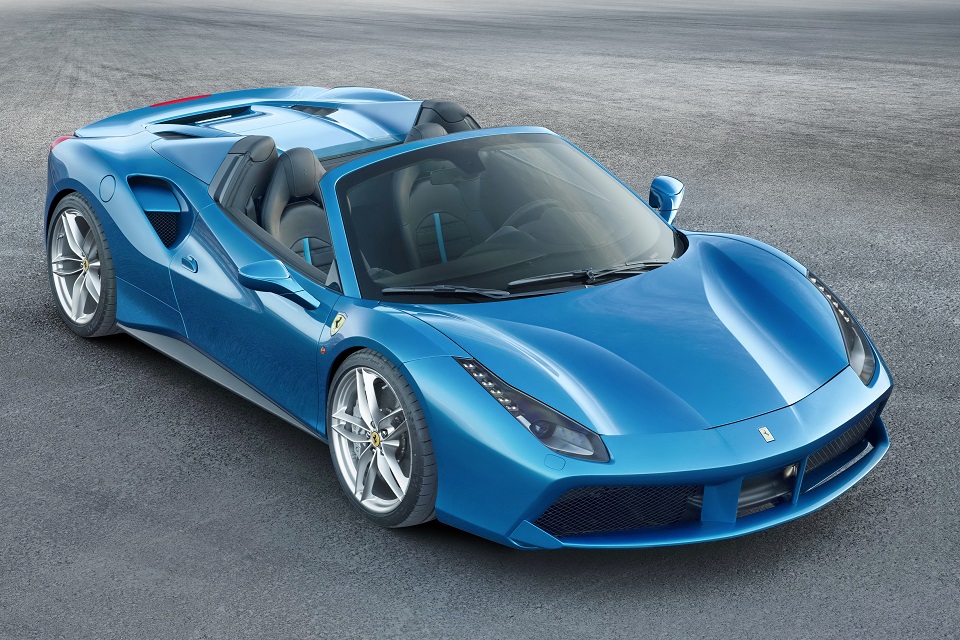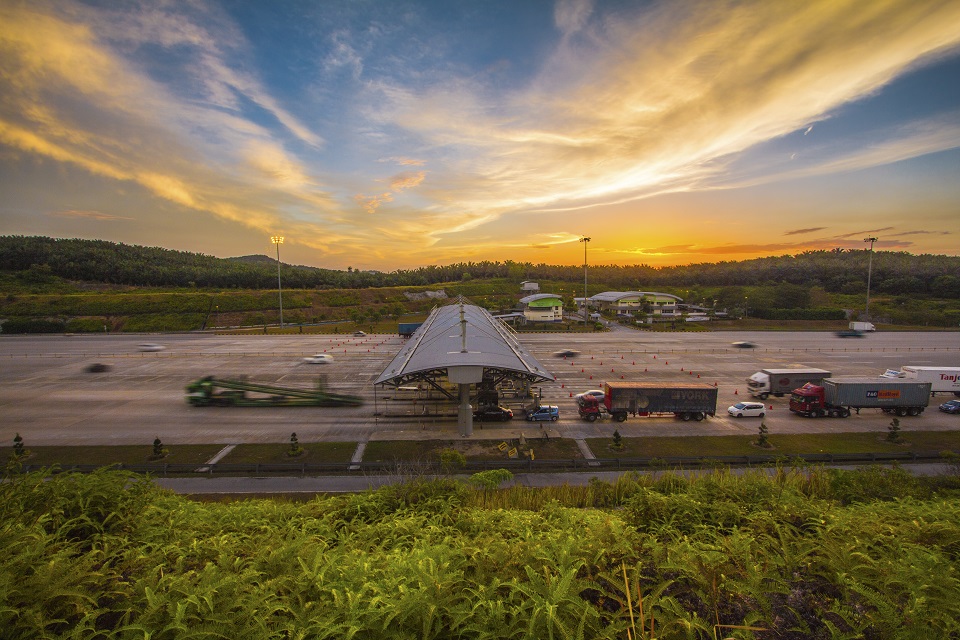Historically, we are most familiar with Mitsubishi for the Pajero SUV as well as its previously intimate ties with Proton, which benefited from various generations of Lancer mechanicals. The company also professes a long heritage of pick-up trucks, but that was not exposed to Malaysians until the late 1990s with the Mitsubishi Storm’s arrival.
The Storm came just after Ford popularized the idea of using pick-ups as a lifestyle vehicle for private usage, and Mitsubishi was able to tip the scales in its favour by being the first in the market to offer a pick-up truck with automatic transmission. Needless to say, the Storm Automatic became a very popular choice among city dwellers, until the Toyota Hilux came and conquered all.
In 2005, the Triton arrived as a replacement model for the Storm. Although it was never able to get anywhere near the Hilux’s level of popularity, the Triton has nevertheless become Mitsubishi’s strongest and most consistent seller in Malaysia. After a decade of service, the Triton receives its much-awaited full model change to bring it inline with the latest wave of pick-up trucks led by the Ford Ranger T6. Global debut of the all-new Triton took place only last year, with Mitsubishi Motors Malaysia duly following up with its local launch in May.

Prices & Variants
The new Triton’s model mix appropriately reflects the wide-ranging demands imposed on modern day pick-up trucks, which require them to simultaneously wear the hat of robust workhorses and that of a cultured day-to-day passenger vehicle. All variants run on 2.5-litre turbodiesel engines built from the same 4D56 block with outputs ranging from 109 to 176hp.
Buyers with purely utilitarian needs in mind have the basic low-riding 4×2 Quest and standard 4×4 manual transmission variants priced at RM69,800 and RM85,800 respectively covering all on-road costs. Equipment levels in these entry models are accordingly basic, but not entirely bare bones – alloy wheels, electric side mirror adjustment, trip computer, USB/MP3, all-round power windows, dual frontal airbags, and ISOFIX mounts are standard right from the Quest model, with the high-riding standard 4×4 manual variant adding telescopic steering adjustment to the mix.

Private buyers, meanwhile, are more likely to plonk some extra cash for the more powerful VGT variants, which start at RM95,000 if specified with manual transmission and rising to RM101,600 for the two-pedaled convenience of an automatic gearbox. In both these variants, Mitsubishi throws in keyless entry, front fog lamps, central touchscreen, auto climate control, steering-mounted audio buttons, and reverse sensors.
A higher-trimmed version of the VGT automatic model, dubbed the Adventure spec, is also available at RM111,600 complete with xenon headlamps, daytime running lights, reverse camera, dual zone climate control, Bluetooth connectivity, leather upholstery, auto cruise, and paddle shifters. For the extra equipment thrown in, the extra RM10,000 charged by Mitsubishi is not unreasonable, but it’s not an entirely necessary expense in our books either.
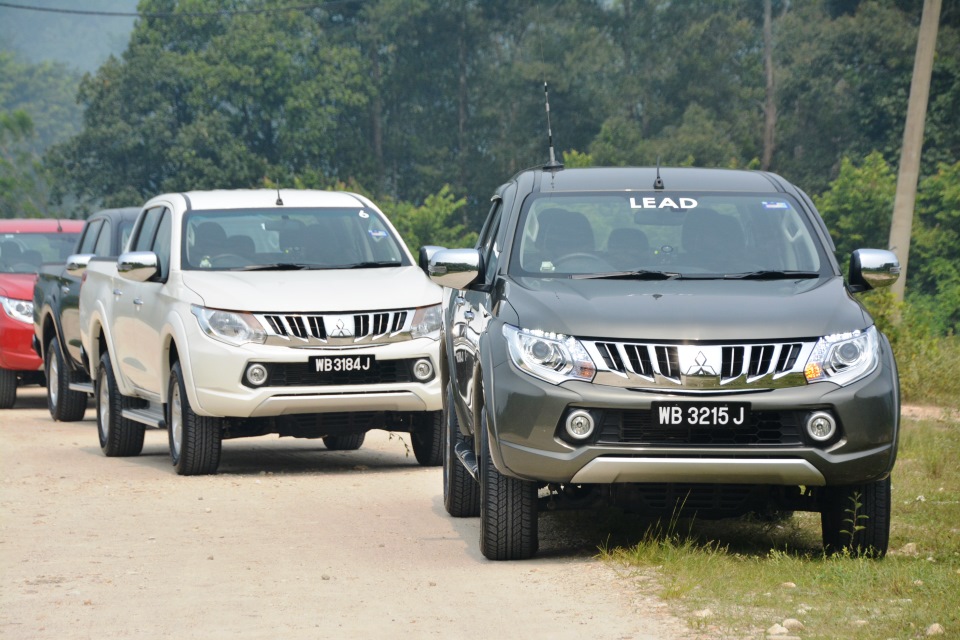
Put it this way, we’d forgo luxuries like leather upholstery and paddle shifters in favour of safety-led enhancements such as electronic stability control and side airbags instead. We can accept that the market is not ready for the additional expense to make ESC standard in this cost-conscious segment, but we feel it’s a major oversight to not have even one variant fitted with this safety feature. Nevertheless, we’d be amiss not to highlight that Mitsubishi claims first-in-class honours for the introduction of keyless entry, tilt & telescopic steering, paddle shifters, xenon headlamps, and daytime running lights.
If you have a few extra cents to spend, accessories such as security tint, leather seats, sports bar, and RalliArt decals are available at extra cost from your Mitsubishi dealer.
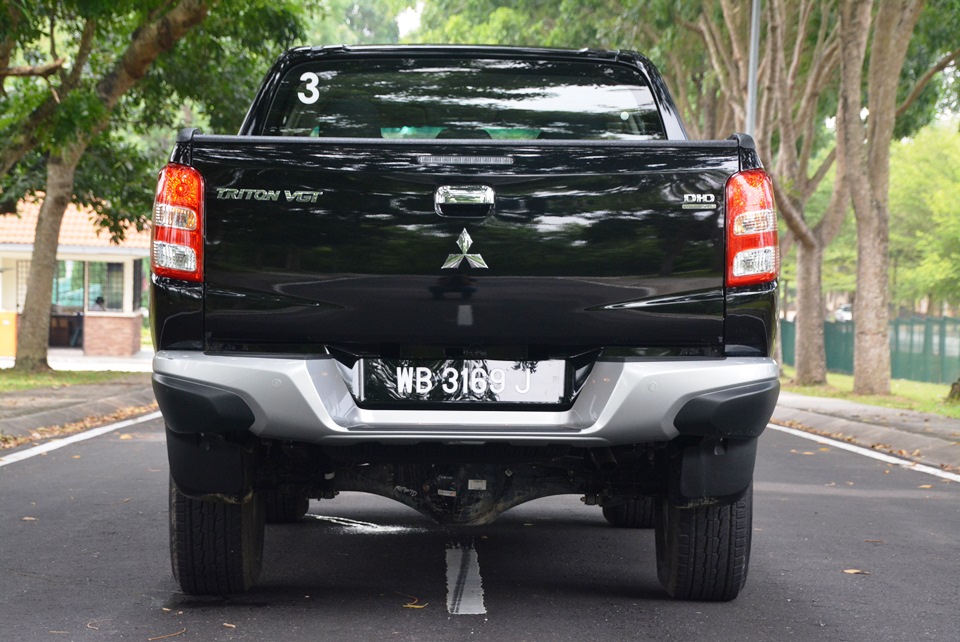
Specifications
Euro 5 diesel may be on its way to Malaysia, but until its availability becomes widespread, we will be one of few markets to do without Mitsubishi’s headline 2.4-litre MIVEC turbodiesel engine offered in majority of the 150 markets which the Triton will be sold worldwide. For the moment, we will be among a handful of countries to get an enhanced version of the predecessor’s Euro 2-friendly 2.5-litre Variable Geometry Turbo powerplant with rated outputs of 176hp and 400Nm.
Offered with a choice of 5-speed manual and automatic gearboxes, the new Triton VGT gets a sizable 50Nm torque increment over its predecessor made possible due to the use of a toughened slushbox. In other words, the outgoing VGT model was already capable of twisting out 400Nm when fitted with manual transmission, but had to be restricted to 350 in automatic versions, which were standard in Malaysia anyway.

Simpler versions of the same 2.5-litre diesel mill power the Quest 4×2 and standard 4×4 variants, fitted with fixed as opposed to variable geometry turbochargers. The non-intercooled Quest model churns out a lazy 109hp and 200Nm whilst the standard 4×4 with intercooler gets 134hp and 324Nm. Both the Quest and standard variants are fitted with 5-speed manual transmissions as standard.
All 4×4 variants of the Triton get Mitsubishi’s Easy Select part-time 4WD system as standard, with VGT variants ostensibly enhanced by the inclusion of a limited slip differential. Selection between drivetrain modes are operated by lever in models with manual transmissions and electronic rotary knob in automatic models. Like most modern part-time 4WD systems, shift-on-the-fly between 2H and 4H is possible at speeds up to 100kph.
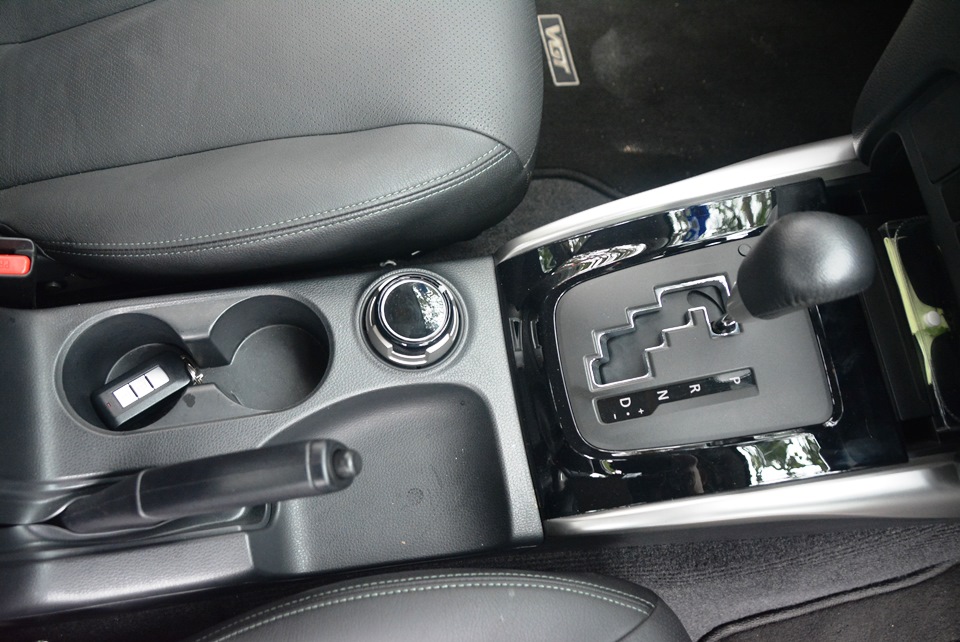
Exterior
Despite wearing a much-changed fascia, one lined very extensively with chrome in the VGT variants at that, the new Triton’s silhouette offers several throwbacks to its predecessor. The distinctive J-line that joins the cabin and cargo bed, in particular, clearly marks its lineage from the predecessor model. Besides aesthetic reasons, the line serves a practical purpose in that it allows the rear seats to be pushed slightly back to free up extra legroom whilst keeping the wheelbase short.
The flip side of this packaging approach, however, is that it gave the previous Triton the disadvantage of having one of the shortest cargo beds in the segment. Mitsubishi did offer the option of a long cargo bed later into the model’s life cycle, but that in turn reduced the vehicle’s departure angle. This time round, Mitsubishi offers only one bed length, one which corresponds closer to the predecessor’s long bed configuration but with a much-improved departure angle of 22 degrees – more competitive with class norms.
Unusual for the styling of pick-ups, even among current generation ones like the Ford Ranger and all-new Toyota Hilux, is the use of sharp crease lines to define the new Triton’s body work, both along its flanks and on its tail gate. These crease lines admittedly add character to the Triton’s appearance, but they also have the downside of adding cost to bodywork repair jobs. For vehicles designed with more than half an eye for rough use, it seems like an odd styling decision to make.

Interior
We typically expect pick-up truck cabins to be more utilitarian than plush, more function than form. If you’re expecting us to tell you that the Triton defies this convention, well, sorry to disappoint you there. Design-wise, Mitsubishi did put in the effort to give the Triton’s interior a car-like look, but a feel of surface textures reveals that ruggedness was still the bigger priority in material selection. Build quality feels as appropriately robust as it should be.
Gone from the previous model is the unique RV meter that, in addition to displaying the usual info you get from a modern day trip computer, also includes a built-in altimeter and barometer. We won’t complain about the deletion of this feature, most buyers are likely to find it redundant, but it does mean Mitsubishi is dropping something that is unique to the Triton; something not necessarily useful, but still nice to have all the same.

Two sore points stick out in our evaluation of the Triton’s cabin; one is the wide array of blank buttons populating the dashboard even on the range-topping Adventure model. It may be the result of deleting equipment not relevant to our market, but the unavoidable impression it gives is that we are not being given the Triton in its best possible specification.
Our other complaint of the interior relates to the relative lack of small item storage spaces. The storage tray ahead of the gear lever was found lacking in depth and the two central cup holders are not the most generously-sized cubby holes we’ve seen. The glove box and lidded centre console box were large enough, but we wished there were more trays and holes for us to empty the contents of our pockets into.
Driving Experience
The previous Triton’s greatest strength was its impressive road manners that was achieved without sacrificing the prerequisite ruggedness required of a pick-up truck. Plaudits today may flow to the Ford Ranger, but it was Mitsubishi that came up with the most convincing impersonation of a passenger car to sit on a ladder frame and they accomplished this a decade ago.
The new Triton stays true to its predecessor’s values by offering more of the same but benefiting from further-honed refinement in the concept. Familiar from the predecessor, we perceived surefooted composure of its well-balanced chassis. Tenacious grip around corners and rock solid stability at high speeds are not usual platitudes used when reviewing pick-up trucks, but these qualities are present and accounted for in sufficient quantities to trouble a number of passenger cars.
Power delivery from the engine notably favours high speed usage; it pulls linearly at the lower revs but truly comes alive from just under 3,000rpm. Combined with the impressive high speed stability of the chassis, it makes going fast in the Triton unerringly easy. Even though having only five gears seem a little behind the competition these days, neither the manual nor automatic versions were found wanting in performance. Our only complaint is that the manual version’s clutch had a rather high biting point, making it tricky to modulate for first-timers.

Verdict
For the most part, the Triton presents a compelling case for itself. Qualities which we admired from its predecessor, namely its fine road manners which came without sacrificing off-road ruggedness, remain integral to its make up. It is, by and large, an enjoyable and confidence-inspiring vehicle to drive. In both ride comfort and driving dynamics, we’d say it is at least competitive with the Ford Ranger, a model generally accepted as being the current market benchmark.
Poke deeper into the argument, however, a number of holes emerge. Although Mitsubishi scores marks for offering amenities such as keyless entry, reverse camera, and LED daytime running lights, the absence of advanced safety equipment such as electronic stability control and side airbags across the range mean that Mitsubishi has left a huge gap on its spec list for its rivals to exploit. It is worth noting that every new truck in the market launched since 2012 offers at least one variant with ESC.
That shortfall in safety means that whilst our recommendation for the Triton is positive, it is not unequivocal. It is a competent product, but not yet a complete one. It’s flaws are not irredeemable, however, and they are crucially not irreversible. We have no complaints on the Triton for the way it drives; if Mitsubishi ramps up the amount of safety features it has on offer, we will have no qualms ranking it alongside the market’s top pick-up trucks.











